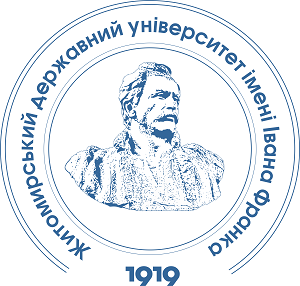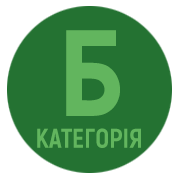DETERMINATION OF THE RESIDUAL CONTENT OF XENOBIOTICS WATER OBJECTS OF THE KYIV REGION
DOI:
https://doi.org/10.32782/naturaljournal.10.2024.23Keywords:
pesticides, water, elemental composition, pollutionAbstract
Pesticides, as xenobiotics, are able to penetrate into aquatic ecosystems and accumulate in living organisms, which causes the need for constant monitoring of their presence in the environment. Since the effective detection of such substances in water is important for the protection of the environment and the health of the population, the study was conducted at the Ukrainian Laboratory of Product Quality and Safety of the Agricultural Industry of the NUBiP of Ukraine, accredited according to the DSTU ISO/IEC 17025 standard. The work investigated the optimal conditions for the extraction of pesticides from surface waters and improved their quantitative determination using chromatography. The main attention was paid to the improvement of the method of analysis of lipophilic xenobiotics, which includes extraction with n-hexane and acetonitrile. The use of different values of logP allows efficient extraction of lipophilic compounds. Substances with different logP were used to evaluate the efficiency of extraction of xenobiotics. This made it possible to investigate how the lipophilicity of substances affects their extraction from the aqueous medium and redistribution into the organic layer during extraction. HPLC/MS/MS (high-performance liquid chromatography) and GC/MS (gas chromatography) chromatographic methods were used for quantitative determination of pesticides. The limit of quantification was 0.1 μg/m³, with a linear concentration range of 0.100–1,000 μg/m³. The proposed method is suitable for monitoring studies and allows obtaining accurate data on the residual amounts of pesticides in surface waters, predicting possible contamination of water bodies. Continuous monitoring using this technique ensures timely detection of xenobiotics and response to changes in water composition, which prevents negative consequences for ecosystems and public health. Thus, the used technique is an important tool for ensuring the ecological safety of agricultural reservoirs and reducing the risks of contamination by agrochemical substances.
References
ДСанПіН 2.2.4-171-10. Гігієнічні вимоги до води питної, призначеної для споживання людиною. Київ : Міністерство охорони здоров’я України. 2010. 60 с.
ДСТУ 7369:2013. Національний стандарт України. Стічні води. Вимоги до стічних вод і їхніх осадів для зрошування та удобрювання. Київ : ДП «УкрНДНЦ». 2014.18 с.
Мосійчук Я., Хоружий П. Кількісні та якісні показники природних і стічних вод у басейні Дніпра. Проблеми водопостачання, водовідведення та гідравліки. 2021. № 36. С. 39–47. https://doi.org/ 10.32347/2524-0021.2021.36.39-47.
Омельчук С.Т., Коршун О.М., Ліпавська А.О., Зінченко Т.І., Мілохов Д.С., Аврамчук А.О., Благая А.В. Аналітичний контроль у воді та повітрі залишкових кількостей пестицидів системи захисту хлібних злаків. Медична та клінічна хімія. 2022. № 24 (4). С. 86–94. https://doi.org/10.11603/mcch.2410-681X.2022.i4.13578.
Осокіна Н.П. Процеси міграції пестицидів і поводження з пестицидами в геологічному середовищі. Мінеральні ресурси України. 2022. № 2. С. 42–46.
García-Vara M., Postigo C., Palma P., Lopez de Alda M. Development of QuEChERS-based multiresidue analytical methods to determine pesticides in corn, grapes and alfalfa. Food Chem. 2023. Vol. 405(B). P. 134870. https://doi.org/ 10.1016/j.foodchem.2022.134870.
Hu C., Feng J., Cao Y., Chen L., Li Y. Deep eutectic solvents in sample preparation and determination methods of pesticides: Recent advances and future prospects. Talanta. 2024. Vol. 266(2). P. 125092. https://doi.org/10.1016/ j.talanta.2023.125092.
Kitte S.A., Chirfa G., Gure A. Effervescent powder-assisted floating organic solvent-based dispersive liquid-liquid microextraction for determination of organochlorine pesticides in water by GC–MS. Heliyon. 2023. Vol. 9. P. 12023–12954. https://doi.org/10.1016/j.heliyon.2023.e12954.
Manousi N., Kabir A., Zachariadis G.A. Recent advances in the extraction of triazine herbicidesfrom water samples. JSSCCJ. 2022. Vol. 45(1). Р. 5(113–133). https://doi.org/10.1002/jssc.202100313.
Nascimento do Carmo S., Dorácio Mendes L., Corazza G., Comelli H., Merib J., Carasek E. Determination of pesticides of different chemical classes in drinking water of the state of Santa Catarina (Brazil) using solid-phase microextraction coupled to chromatographic determinations. Environ. Sci. Pollut. Res. 2020. Vol. 27. P. 43870–43883. https://doi.org/10.1007/s11356-020-10287-0.
O’Hara T., Singh B. Electrochemical Biosensors for Detection of Pesticides and Heavy Metal Toxicants in Water: Recent Trends and Progress. ACS EST Water. 2021. Vol. 1(3). P. 462–478. https://doi.org/10.1021/acsestwater.0c00125.
Sousa J., Oliveira do Nascimento H., de Oliveira Gomes H., Ferreira do Nascimento R. Review Article Pesticide residues in groundwater and surface water: recent advances in solid-phase extraction and solid-phase microextraction sample preparation methods for multiclass analysis by gas chromatography-mass spectrometry. Microchem. J. 2021. Vol. 168. Р. 106359. https://doi.org/10.1016/j.microc.2021.106359.
Timothy O., Opeyemi A., Oyewo D. Onwudiw Simultaneous removal of organics and heavy metals from industrial wastewater: A review. Chemosphere. 2021. Vol. 262. Р. 128379. https://doi.org/10.1016/ j.chemosphere.2020.128379.
Tong Y., Liu X., Zhang L. One-pot fabrication of magneticporous Fe3/C/MnO/ graphitic carbon microspheres for disper-sive solid-phase extraction of herbicides prior to their quantifi-cation by HPLC. Microchim Acta. 2019. Vol. 186 (4). P. 256. https://doi.org/10.1007/s00604-019-3358-0.
Veni Veloo K., Ibrahim N.A.S. Analytical Extraction Methods and Sorbents’ Development for Simultaneous Determination of Organophosphorus Pesticides’ Residues in Food and Water Samples: A Review. Mol. 2021. Vol. 26. P. 5495. https://doi.org/10.3390/molecules26185495.






